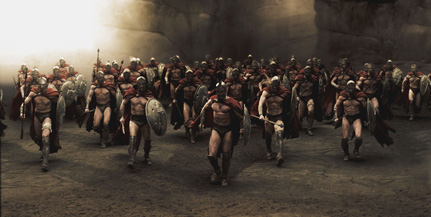|
|
What Went Right: 300By Shalimar SahotaMarch 5, 2012
300 unashamedly glorifies its violence, half expecting us to cheer the Spartans on when they slice a Persian’s leg off (something that actually took place during a few screenings), and with the overuse of slow motion we can "appreciate" it just that little bit more. As the camera circles around the action, one could even argue that the sight of a Spartan solider in combat actually looks quite beautiful. Plus, it cannot be denied that it also glorifies the strength, courage and determination of a group of men who will stand up and fight for what is right, even if it leads to their death. The film cast the likes of Butler, Lena Headey, Wenham, Dominic West and Michael Fassbender. Butler was probably the most well known, but at that point you couldn’t really call any of them stars. While this helped keep the cost of the production down, the brilliance here was that they all happened to be great actors. The male cast members were put through an intense training regime to build up their bodies (bizarrely, Snyder also trained with his cast). The backgrounds may not be real, but for audiences, you can totally believe that these "actors" can kill just about anyone or anything. Rather than build up to one long drawn out battle sequence, 300 instead delivered multiple battles. When most critics describe a film as "like a video game," it’s often detrimental to the film they’re talking about, which makes me wonder what kind of games critics have been playing, if any. Those that didn’t like the film obviously placed the same comments upon 300 - except it doesn’t just look like a video game, it plays like one too. And I mean this as a compliment.
[ View other columns by Shalimar Sahota ]
[ View other What Went Right columns ]
[ Email this column ]
|

|
|
|

|
Friday, November 1, 2024
© 2024 Box Office Prophets, a division of One Of Us, Inc.


